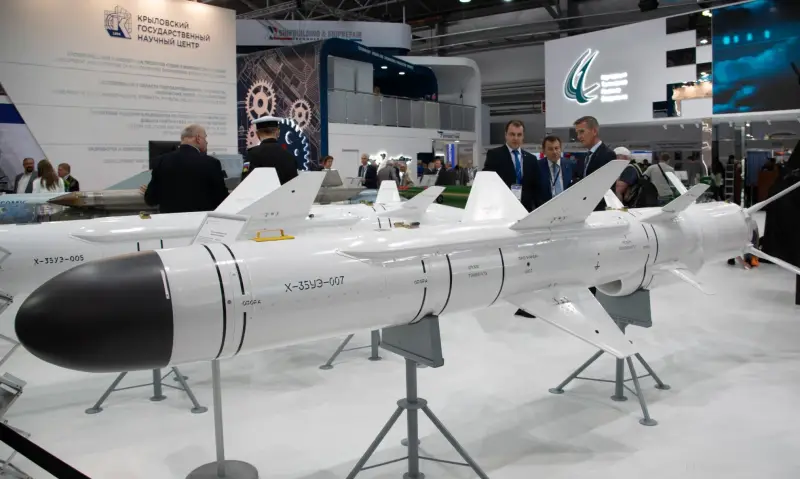Vietnam Unveils New Indigenous Cruise Missile System Amid Rising South China Sea Tensions
Vietnam’s large-scale military display unveils a new homegrown cruise missile system by Viettel, marking a major step in Hanoi’s pursuit of defence self-reliance and regional deterrence.
In a bold demonstration of growing military capability, Vietnam has publicly revealed what appears to be a newly developed indigenous cruise missile system during an unprecedented large-scale military rehearsal held in the lead-up to the country’s 80th anniversary of the August Revolution and National Day on September 2.
The rehearsal, which took place at National Military Training Center No. 4 near Hanoi, marked the largest coordinated display of military hardware and personnel in recent memory, with more than 15,000 soldiers, tanks, artillery, and specialized combat vehicles participating.
But it was the debut of a new cruise missile system—reportedly developed by the Viettel Aerospace Institute (VTX)—that captured the attention of military analysts and defence watchers monitoring Vietnam’s expanding missile capabilities and evolving strategic posture in the South China Sea.
According to imagery analysed by regional defence observers, the missile system appears to be part of a new subsonic cruise missile family designed for dual-purpose operations—with both anti-ship and land-attack capabilities.
While the Vietnamese government has not officially confirmed the missile’s specifications, open-source defence analysts suggest that the system may include variants with operational ranges of approximately 80 km, 100 km, and potentially up to 300 km—a significant leap in local cruise missile technology.
The design of the missile, based on visual similarities, has drawn comparisons to Russia’s Kh-35E anti-ship cruise missile, a weapon previously acquired by Vietnam for its naval platforms.
However, Hanoi has yet to confirm whether the new system is based on foreign technology or fully indigenously developed, though the increasing involvement of VTX suggests a shift toward local innovation and defence self-sufficiency.

“Defence analysts have noted that the system bears a resemblance to Russia’s Kh-35E, but Vietnam’s continued commitment to indigenous weapons development suggests that it may have been independently developed,” according to a regional defence analysis source.
This latest unveiling also raises questions about the current status of the earlier VCM-01 cruise missile, which was reportedly designed for an 80 km range but has not yet been seen in operational deployment, prompting speculation that the newly displayed variant could represent a VCM-02 or an upgraded derivative.
Vietnam’s cruise missile development has been spearheaded by the Viettel Aerospace Institute, an offshoot of Viettel Group—Vietnam’s largest military-run conglomerate, known for its rapid advancements in defence electronics, radar, and missile propulsion technologies.
Over the past decade, Hanoi has significantly ramped up investment in homegrown weapons programs, motivated by its long-standing goal to reduce dependency on foreign suppliers and build credible deterrent capabilities against rising threats, particularly from China in the contested South China Sea.
The strategic timing of the missile’s public debut also underscores Hanoi’s intention to send a strong message of military modernization and national resolve, especially in light of intensifying territorial disputes involving Chinese naval and maritime militia activities in the Spratly and Paracel Islands.
In parallel with its missile ambitions, Vietnam has also accelerated procurement and domestic development across several other military domains, including UAVs, radar systems, anti-ship missiles, and coastal defence networks—all geared towards enhancing its “anti-access/area denial (A2/AD)” capabilities against superior naval forces.
The appearance of the cruise missile at such a high-profile event—accompanied by thousands of troops and heavy armour columns—reflects Hanoi’s evolving defence doctrine, which increasingly emphasises the integration of indigenous strike systems with joint land-sea-air operations.

Defence sources in Hanoi also believe that the new missile’s public showcasing could be aimed at strengthening political unity and civilian confidence in the country’s defence preparedness ahead of the high-profile national celebrations on September 2.
The choice of National Training Center No. 4, situated close to the capital, further illustrates the symbolic and operational importance of the exercise, which was clearly designed for both domestic morale and international signalling.
The Vietnamese military’s decision to go public with a new cruise missile system—especially one believed to be developed internally—highlights a strategic pivot away from past reliance on Russian and Eastern Bloc weapon systems, and toward a modernised, indigenous defence industrial base.
The development is also likely to be closely monitored by defence planners in neighbouring ASEAN countries, as well as by strategic rivals such as China, given its implications for regional balance of power and Hanoi’s rising role as a maritime player in the Indo-Pacific.
Vietnam’s broader defence transformation includes participation in joint naval exercises with partners such as India, Russia, and Japan, as well as active engagement in ASEAN-led multilateral security forums, reflecting Hanoi’s ambition to act as both a regional balancer and a self-reliant defence actor.
If the missile system is successfully inducted into operational service, it could provide Vietnam with a potent first-strike and defensive response capability, adding to its existing mix of shore-based anti-ship systems, fast-attack naval craft, and aerial surveillance platforms.
The growing sophistication of Vietnam’s missile arsenal also aligns with recent trends in asymmetric warfare, where mid-range cruise missiles are increasingly seen as cost-effective tools for maritime deterrence and land precision strikes in contested environments.


With global attention sharply focused on Asia’s flashpoints—from Taiwan to the South China Sea—Vietnam’s cruise missile debut signals a clear message: Hanoi is ready to defend its sovereignty with precision firepower and domestic innovation.
As regional tensions continue to escalate, particularly with the increased militarisation of disputed waters by China, Vietnam’s unveiling of its indigenous missile system is both a technological milestone and a strategic warning.
With the world watching, Vietnam’s latest cruise missile program reinforces the country’s broader commitment to military modernisation, strategic autonomy, and regional deterrence—all underpinned by a growing confidence in homegrown defence solutions.


